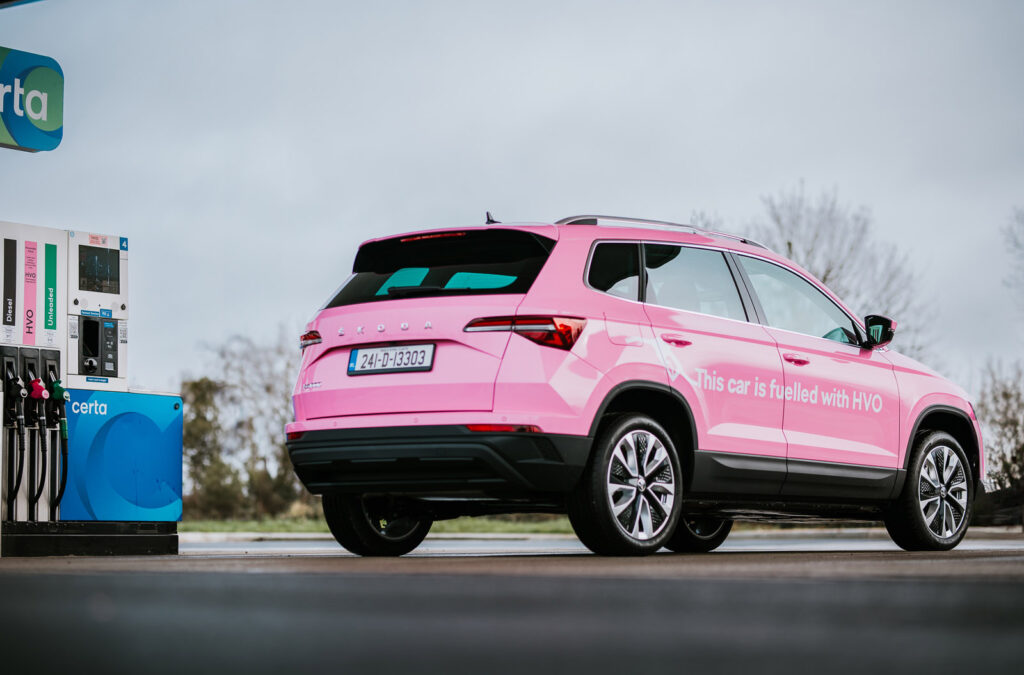
In the motoring world there is much talk right now about saving the planet by moving away from diesel and petrol and opting for a hybrid or a fully electric vehicle. But there is another option called HVO. Last week, the Skoda Karoq that I drove was powered by HVO fuel.
HVO stands for hydrotreated vegetable oil. It’s a second-generation biofuel that replaces or can mix in any proportion with the diesel in your tank.
Many motorists have been known to opt for the wrong nozzle when fuelling their cars and it can be an expensive mistake, filling up with diesel when you really want petrol, or vice versa.
But there is no mistaking when filling up with HVO as the nozzle is pink and you won’t confuse it with green for petrol or black for diesel.
Pink is a very strong colour and has been used by LGBT+ and also to promote dangers of breast cancer. Now pink, which has been described as the colour of universal love of oneself and of others, is featured by HVO and some Skoda Karoq cars also come in a shade of pink.
My test car came in an orange colour, which stood out from the crowd. And written on back door of the driver’s side were the words: ‘‘This car is fuelled with HVO.’’
You can only fill up with HVO at Certa garages and I used their filling station near Tesco in Liffey Valley Shopping Centre; the other five locations where you can get HVO right now are: Lee Tunnel, Ballyhaunis, Dundrum, Maynooth and Trim. Certa plan to have HVO available at all their filling stations around the country.

Now, to convince drivers of cars with diesel engines to switch from diesel to HVO, I think you would need the HVO to be slightly cheaper, but in fact it’s about ten cent more expensive. HVO is already heavily subsidised, but I think it would definitely need to be cheaper than diesel to attract more customers.
HVO is made from a mixture of products: straw, animal fat waste, used cooking oil, lipids and residues from vegetable oil processing. The idea is that there is a huge reduction in C02 emissions. HVO can also power farm machinery in addition to cars, so it should be attractive to the farming community.
Skoda, who are part of the VW group, are pushing HVO, hence my drive in the impressive Karoq. But most other car brands with modern diesel engines can also use HVO. If in doubt check with your garage or manufacturer.
Diesel engines have become much quieter in recent years and it’s difficult to say if the HVO is quieter than diesel. HVO is odourless but I got a smell of diesel I opened the fuel cap. However, the previous driver was obviously using a mixture of diesel and HVO.
The range in the Karoq with a full tank was 760km, which is impressive and I cannot say for certain if that fuel was all HVO or a mix of diesel and HVO.
The Karoq is a beautiful car to drive and travel in and no doubt it’s a great model to test HVO. I loved the high driving position. There is plenty of room for five adults, you get a huge boot and best of all a real spare wheel, which is a novelty nowadays.
Prices for the 2.0-litre Karoq start at €46,435. It’s definitely a good buy and then it’s up to you whether you want diesel or HVO.









